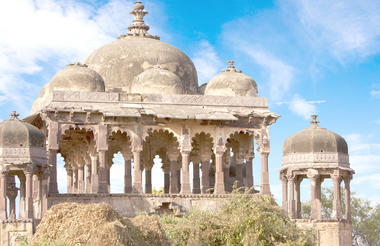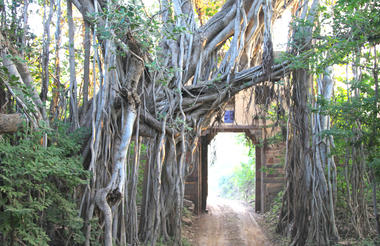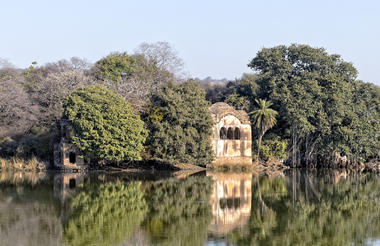Vast, diverse, deeply spiritual and utterly unforgettable, India is unlike anywhere else on earth – a melting pot of ethnicities and religions, a treasure trove of history and culture, and a curious mixture of chaos and serenity. Stretching across more than three million square kilometres, it encompasses a staggering array of landscapes, vistas and environs, and offers unparalleled travel experiences – from the beautiful beaches of Goa, to the compelling craziness of Kolkata, the sacred Ganges river banks of Varanasi, the snow-capped peaks of the Himalayas in Kashmir and the ancient, exquisitely crafted temples dotted across the entire country. Not to mention the vibrant, friendly people, and the incredible cuisine.
Resting on the banks of the River Luni just north of the vast Jawai Dam, the village of Jawai Bandh rests in Western Rajasthan, India. This village serves as an excellent base from which explore the scenic surrounding area including the large glistening Jawai Dam. Built across the Jawai River, the dam encompasses the Jawai Dam Crocodile Sanctuary which protects an array of wildlife such as crocodile and a variety of Indian and migratory birds including a mix of crane and duck species. Bear, hyena, wolf, and many leopards have also been spotted in the surrounds, earning these granite hills the name ‘The Leopard Hills of India’. The Jawai area is known for its harmonious coexistence of humans living amidst wildlife, and it said that this is the reason that Jawai is home to the largest population density of leopards in India. Don’t miss the opportunity to visit the nearby Kambeshwar Ji leopard sanctuary.



Tucked away in the Aravali mountain range in the north Indian state of Rajasthan, Bera is a tiny hamlet surrounded by some spectacularly scenic countryside. This surrounding wilderness area is characterised by a desert landscape of forest plains and rocky outcrops inhabited by an impressive array of wildlife species including Indian wolf, sloth bear, Indian leopard, striped hyena, golden jackal, and jungle cat. The hamlet itself features a small but charming heritage hotel, Castle Bera, which serves as an ideal base for exploring the area’s many tourist attractions. These include the Jawai hills and lake, one of the region’s most renowned wild leopard spotting locations; the Ranakpur Temple, a famous Jain structure; and Kumbalgarh Sanctuary, a vast wildlife refuge centred around the impressive historic fort of Kumbhalgarh.



Located in the heart of Rajasthan between Jodhpur and Ajmer, Nimaj is a small heritage village steeped in history and rural charm. Once part of the princely state of Marwar, it is best known for its centuries-old temples, stepwells, and the beautifully restored Nimaj Palace, now a boutique heritage hotel. Travellers visit Nimaj to experience authentic Rajasthani culture away from the bustle of larger cities. Highlights include exploring the ornate Chhatra Sagar reservoir, taking jeep safaris into the surrounding countryside to spot migratory birds and wildlife, and enjoying traditional folk performances under starlit skies. The village’s blend of royal architecture, tranquil landscapes, and warm hospitality makes it an inviting stop for those seeking both cultural discovery and rural serenity in Rajasthan.



A handful of skyscrapers reach for the sky in the CBD of Gurgaon, a northwestern metropolis in the province of Huryana, near Delhi. Historically known as Guru Gram, the dormant town gathered economic momentum when Indian automobile manufacturer, Maruti Suzuki India Limited, set up a manufacturing plant here in the 1970s. Just a few decades later, half the Fortune 500 companies had opened offices in Gurgaon. Despite the congested urban areas, birding enthusiasts can find respite at Sultanpur Bird Sanctuary, a famous bird-watching spot only 15 km from the city.
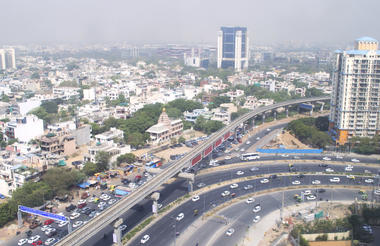
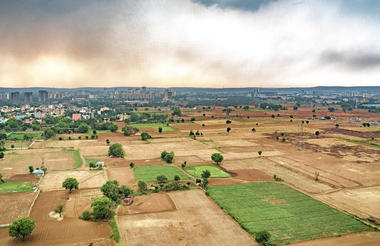
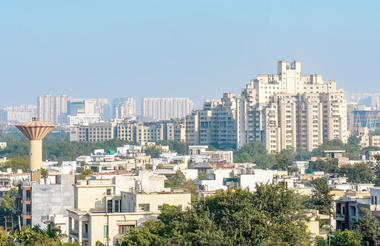
Sawai Madhopur, the lively capital city of the greater Sawai Madhopur District, rests within southeast Rajasthan, on the northern extension of the sprawling Vindhyan Plateau. The city is famous for its flourishing fauna and flora and mouth-watering cuisine. Some of the best ways to experience these local treasures include a meander through enchanting public gardens and a sample of the delicious local dishes at the numerous atmospheric restaurants. Both a history and nature enthusiasts dream, Sawai Madhopur opens a world of enjoyable excursions with some of the most notable attractions being the UNESCO World Heritage Site of Ranthambore Fort; the religiously significant Chamatkar Temple; and the remarkable Ranthambhore National Park, renowned for its abundance of free-roaming wildlife including the majestic Bengal tiger and Indian leopard.
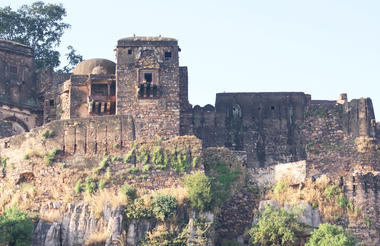
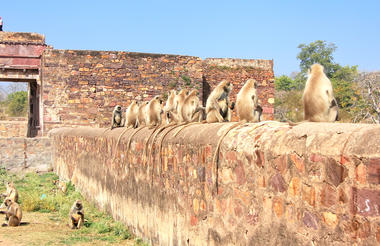
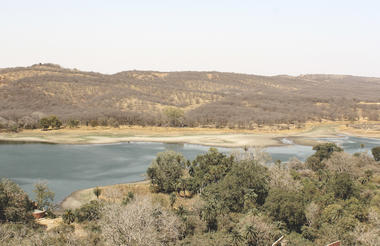
Located in the Sawai Madhopur district, the Ranthambore National Park, in the western state of Rajasthan, is one of the most visited wildlife parks in India. Spanning over an impressive 1300-square-kilometer stretch of wilderness, the park’s outstanding natural beauty is characterized by its dense jungle, golden savanna, dramatic cliffs and lotus-filled lakes. Considered the best spot to catch a glimpse of tigers in the wild, the park offers visitors a spellbounding combination of mystical temples, wild beauty and crumbling ruins. While the main attraction is undoubtedly the elusive Bengal tiger, the park provides a sanctuary for other wildlife including, among others: sambar, gazelle, caracal, black buck, crocodile, chital, wild boars and a wide array of birds. Don’t miss the ancient Ranthambore Fort, perched high on the cliffs overlooking the vast expanse of this spectacular park.



As previously described



As previously described
